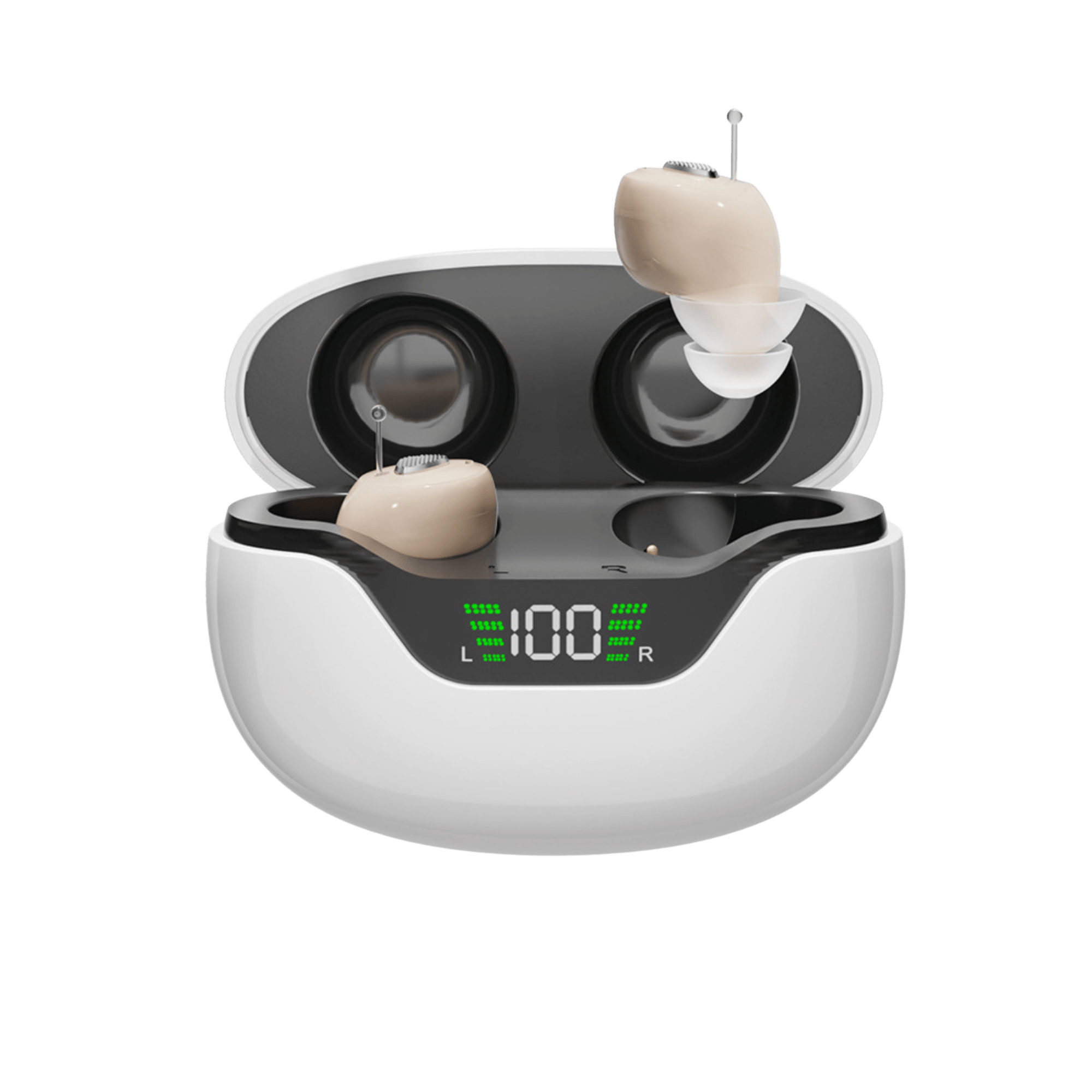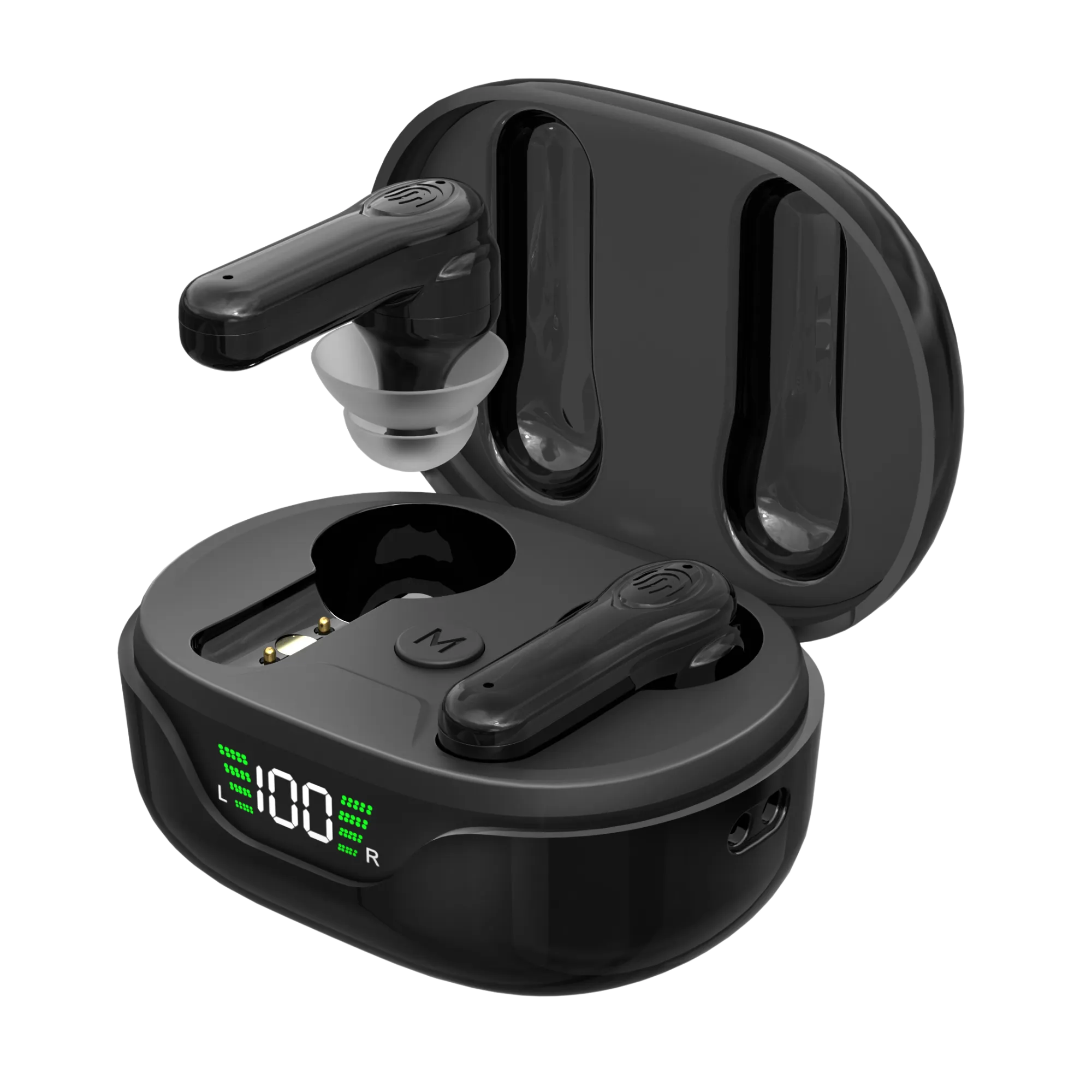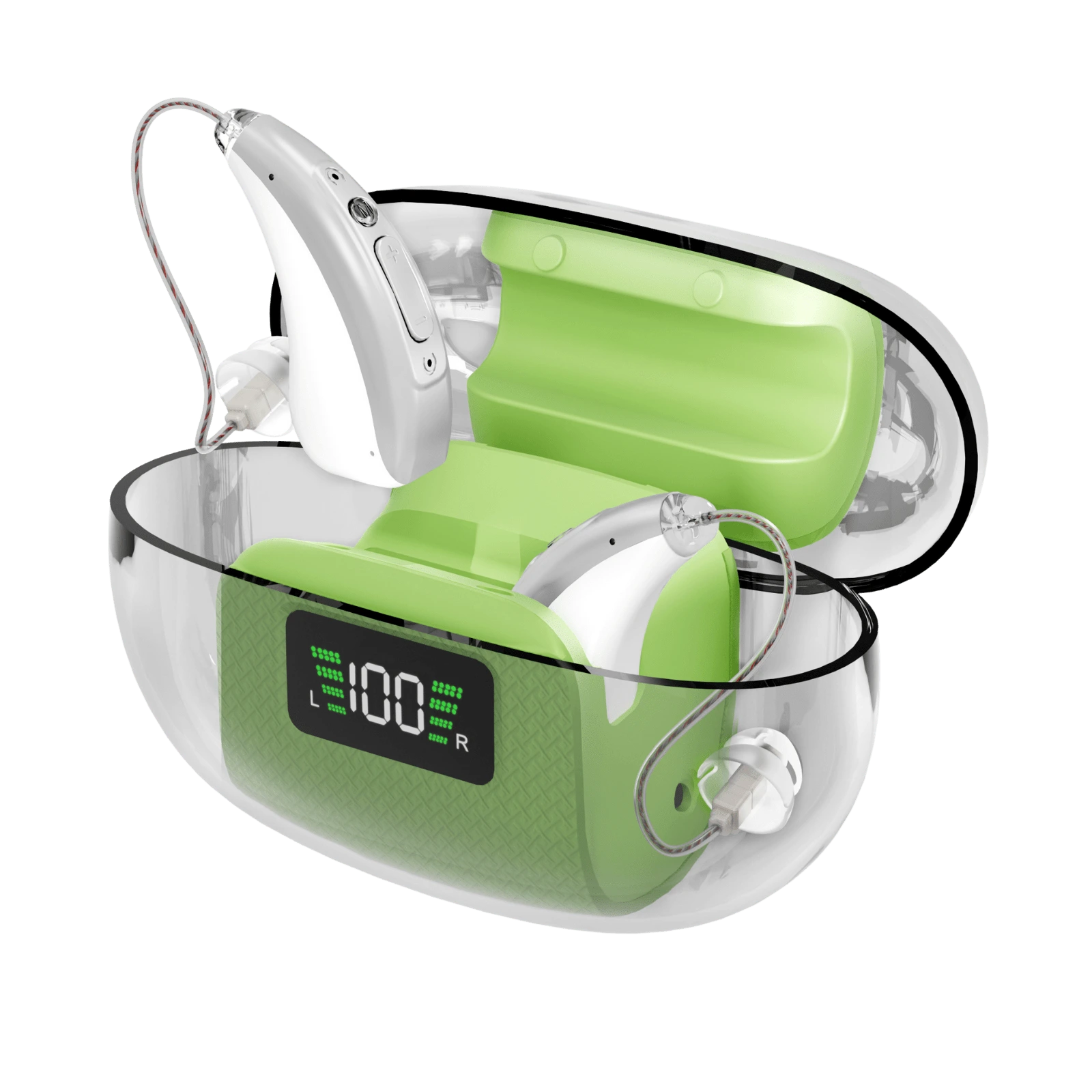In a world saturated with sound-from bustling city streets to endless streaming-understanding how hearing aids interact with everyday devices like headphones can transform daily life for millions. Over 50 million Americans experience some degree of hearing loss, making it the third most common chronic condition in the U.S. Whether you're coping with age-related decline (affecting nearly 96% of adults by age 90) or simply seeking clearer sound, hearing aids are no longer just medical tools-they're lifestyle tech.
At PandaHearing.com, our mission is to make high-quality, affordable hearing aids accessible. From advanced Bluetooth streaming to self-hearing tests, our devices are designed to fit seamlessly into everyday life, boosting clarity and confidence without the clinic price tag.
Part 1: Hearing Aids on TV - Shaping Perceptions and Breaking Stigmas
Television is more than entertainment; it reflects-and often shapes-public perception. For decades, hearing aids were sidelined or stereotyped, but media in 2025 is rewriting that story.
From Stigma to Empowerment in Ads
Older commercials often depicted seniors fumbling with hearing loss, equating aids with frailty. No wonder only about 20% of those who need hearing aids actually use them. Modern campaigns have flipped the narrative. For example, Phonak ads now show users hiking or at concerts with effortless Bluetooth streaming.
At Panda Hearing, our commercials highlight real people using affordable models like the Panda Quantum ($499)-FDA-approved, self-fitting, and delivered in 3 days across the U.S. & Canada. With built-in hearing tests and automatic adjustment, Quantum eliminates costly audiologist visits while giving users control through our mobile app.
TV & Movie Representations That Matter
-
"Switched at Birth" (ABC): authentic portrayal of deaf/hard-of-hearing life.
-
"The Golden Bachelor" (ABC): contestants openly discuss hearing aids, reducing stigma.
-
"A Quiet Place" films: starring Millicent Simmonds, a deaf actress using hearing aids in real life.
-
"Sound of Metal": critically acclaimed for its emotional take on hearing loss.
-
"Hawkeye" (Disney+): shows noise-induced loss in a superhero character.
-
"El Deafo" (Apple TV+): animated kids' series introducing hearing aids early.
These portrayals normalize hearing aids as everyday tech. Our Panda Elite ($899) mirrors this shift: binaural synchronization, direct streaming, and DSP for crystal-clear dialogue-perfect for binge-watching your favorite shows without missing a word.
Real Stories from Social Media
On platforms like X, users share both struggles and successes. One recalled poorly fitted aids in childhood leading to tinnitus-highlighting why comfort and customization matter. Panda's Supreme model ($1,099) addresses this with ergonomic fit, 12 ear tip sizes, and a three-microphone array for immersive, comfortable listening.
Part 2: The Symphony of Sounds - Pairing Hearing Aids with Headphones
Pairing hearing aids with headphones used to be tricky, but advances like Bluetooth 5.0/5.2 and LE Audio have changed the game.
Seamless Connectivity
-
Apple AirPods Pro 2: integrate with Live Listen for amplified conversations.
-
Sennheiser HD-650 / Sony over-ears: roomy cups that avoid feedback.
-
Shokz bone-conduction headphones: send vibrations through the cheekbones, bypassing ear canals.
Our Panda Advanced III ($299), with Bluetooth 5.2 and a 20-hour battery life, pairs easily with Bose or Sony headphones. The result? Stable streaming for music, calls, or Netflix marathons-at a fraction of the $2,000+ price of clinic devices.
Customizable Sound Environments
AI-powered aids now adjust sound automatically. Panda Quantum, for instance, uses WDRC and Active Noise Reduction to adapt whether you're at home watching TV or outside in traffic. Users can fine-tune through the app, while headphone ANC (active noise cancelling) adds another layer of control.
Scenario: Watching a thriller on Netflix? Pair Panda Elite with Bose QuietComfort headphones. DSP + ANC ensure whispers are sharp, while background hum vanishes.
Noise Management in Real Life
In noisy settings like subways or cafés, the Supreme's three-mic array and 114 dB SPL output enhance speech while your headphones cut out the chaos. Quantum's adaptive feedback control (10-117 dB) ensures no annoying whistles, even with long headphone sessions.
| Feature | Hearing Aids Alone | With Headphones | Panda Example |
|---|---|---|---|
| Noise Reduction | Basic filtering | ANC up to 40 dB | Quantum's ANR + Bose ANC |
| Connectivity | App-based | LE Audio / BT5.2 | Elite's Bluetooth streaming |
| Battery Life | 16-24h typical | Extended w/ headphones | Supreme's 26h + 3× recharge |
| Comfort | In-ear fit | Over-ear support | Advanced III's BTE design |
⚠️ Tip: Avoid prolonged use of in-ear headphones directly over aids, as it can worsen hearing loss.
Conclusion: An Inclusive Future for Hearing
As television shifts from stigma to empowerment, and technology bridges hearing aids with headphones, the future of hearing is clearer than ever. For the 48 million Americans living with hearing loss, modern aids aren't just medical devices-they're lifestyle upgrades.
At PandaHearing.com, our lineup-from the budget-friendly Advanced III ($299) to the premium Supreme ($1,099)-delivers Bluetooth streaming, long battery life, and ergonomic comfort. The Quantum ($499) even self-adjusts without an audiologist visit, making it one of the smartest OTC solutions available today.
👉 Ready to reclaim crystal-clear sound? Order now for free shipping, 30-day money-back guarantee, and 3-day U.S. delivery. Better hearing-or your money back.





